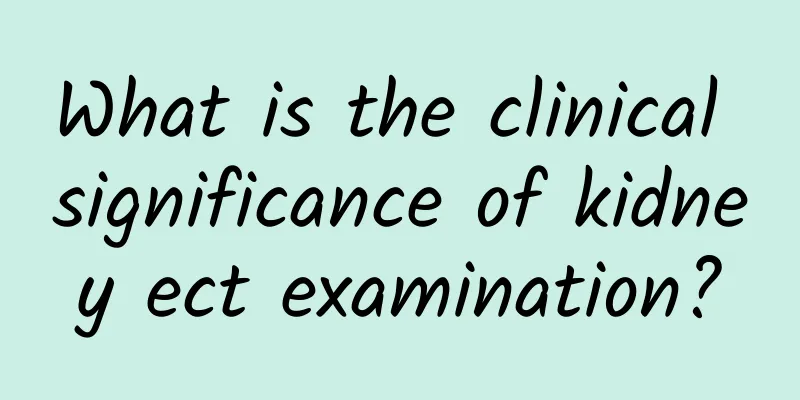Seven symptoms of blood vessel blockage

|
Vascular blockage is very common in our daily life. When a blood vessel is blocked, the body will show certain symptoms. For example, if there is a cardiovascular blockage, it will often cause sudden chest tightness or pain. At this time, you should be alert to coronary heart disease or myocardial infarction. In addition, if you have difficulty breathing, be alert to pulmonary embolism. If edema occurs, or the urine volume changes, be alert to renal artery blockage. 1. Sudden chest tightness may cause pulmonary embolism If you suddenly feel chest tightness and shortness of breath, or even faint when you stand up after sitting for a long time or lying in bed, you should be alert to the possibility of pulmonary embolism caused by the detachment of blood clots in the lower limb veins and blocking the pulmonary artery. Pulmonary embolism is very harmful and can cause sudden death in severe cases. If you experience the above symptoms, you should go to the emergency room as soon as possible. 2. Chest pain may be caused by coronary heart disease or myocardial infarction The coronary arteries are blood vessels that supply blood to the heart. If they are blocked or narrowed, the blood supply to the heart will be restricted, and severe ischemia will cause chest pain. If the chest pain is persistent, it is even more dangerous, indicating that the coronary artery is completely blocked and blood flow is completely interrupted. If it lasts for more than 15 to 20 minutes, the myocardium will die, which is called myocardial infarction. 3. Weakness on one side of the body may indicate a stroke Sudden weakness of one side of the limbs (including upper and lower limbs) indicates blockage of the cerebral artery or carotid artery. The patient may also experience slurred speech, facial paralysis on one side, and blurred vision. If these symptoms occur, you need to see a doctor promptly, regardless of whether they can be relieved on their own. 4. Edema and changes in urine volume indicate renal artery obstruction The renal artery is responsible for the blood supply to the kidneys. If plaques occur in the renal artery, it may reduce the blood supply to the renal artery and even affect kidney function, causing symptoms such as fatigue, decreased appetite, changes in urine volume, and limb edema. The kidney is an important organ for regulating blood pressure. Renal artery stenosis can lead to high blood pressure, and this high blood pressure cannot be effectively controlled by medication. As renal ischemia worsens, its "detoxification" function will be impaired and may even develop into "renal failure", requiring dialysis treatment. 5. Leg pain when walking, lower limb artery blockage The limb arteries are responsible for the blood supply to the upper and lower limbs. When the blood vessels in the lower limbs are ischemic, you may experience leg pain when walking. The pain may be relieved after resting, but will reappear when you walk again. The medical term is "intermittent claudication." If the blockage of the lower limb arteries is ignored and the disease progresses further, it may lead to severe ischemia of the lower limbs, decreased skin temperature, weakened or disappeared pulsation of the dorsalis pedis and posterior tibial arteries, and lower limb pain even when not walking (i.e. resting pain). Further progression may lead to limb ulceration, inability to heal wounds, and even tissue necrosis (gangrene), necessitating amputation. Diabetic patients are more likely to develop lower limb lesions, so they must pay special attention to it. 6. Weakened pulse, low blood pressure, and blocked upper limb arteries If the upper limb arteries are blocked, the arterial pulsation on one or both sides will weaken, and the blood pressure in the arms will decrease. In severe cases, the upper limbs will actively "steal" blood from the brain, causing cerebral ischemia and symptoms such as dizziness and unsteady standing. 7. Asymmetric edema of the lower limbs and deep vein thrombosis of the lower limbs It is easy to occur in patients who are bedridden for a long time, sit for a long time, are dehydrated, have tumors, etc., and manifests as swelling and pain in the lower limbs. If you find that the degree of edema in your two feet or legs is inconsistent, or one side is not swollen but the other side is swollen, it is often a sign of deep vein thrombosis in the lower limbs. The blood clot blocks the veins, causing poor blood return, which in turn causes edema of the limb on the side where the blood clot is formed. At the same time, there will be symptoms such as cold skin and prone to ulcers. Once a blood clot in the veins of the lower limbs breaks off, it will block the pulmonary artery. |
<<: How to treat chimney pipe blockage
>>: What is Qi and blood blockage?
Recommend
Symptoms of lumbar hernia
As we get older, we always have some lower back p...
What to do if a male is positive for Mycoplasma adenomatosis
If a male ureaplasma test result is positive, it ...
Best treatment for mouth ulcers
Oral ulcers are a relatively common disease in li...
Is Maca a traditional Chinese medicine?
Maca is mainly a plant that grows in high altitud...
How to recover from chest tightness and shortness of breath caused by overwork?
Because of the busy work, people work dozens of h...
Natto capsules efficacy
As for the therapeutic effects of some drugs, we ...
How many years can a lens replacement last?
Artificial lens, also known as intraocular lens, ...
How to exercise for lumbar pain?
More and more people are suffering from lumbar pa...
What to do if my stomach swells after drinking water
Drinking less water can cause various problems to...
Detoxification, beauty and weight loss, four porridges are the most effective
Nowadays, more and more people prefer foods that ...
What is the cause of vomiting yellow water in early pregnancy?
Vomiting yellow water during pregnancy indicates ...
Brucea javanica oil for treating warts
Brucea javanica is a plant that can be used in tr...
What to do if the tumor spreads? How to deal with the spread of tumors
Tumor is a disease that is very harmful to the hu...
What is the cause of thin yellow tongue coating? How to treat it?
As we all know, thin yellow tongue coating is a c...
Why can't I eat?
It is quite common in life to be unable to eat, w...









